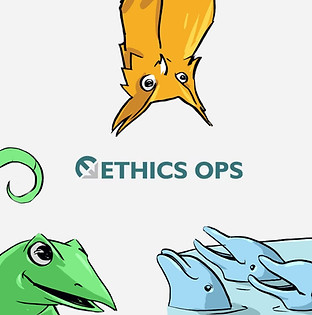Ethics Competencies for
Trainers & Organizations
What ethics competencies
can the employees or members of my organization
or the members of the profession I am training
develop or improve by using Noggin’s Brain Processes Map
to learn the concepts and terminology to
speak ethics fluently?

Trainees can understand and practice some or all these competencies, depending on the topics presented and the time available.
The videos are designed to train members of the company or organization and/or to train the trainer to present the material.

Pardon our Progress!
Some of the content that exists on this page is still in development
I. What Ethics Is

Speak an ethics language based on a research derived brain processes map
Why it is important and how to confidently speak an easily learned and remembered ethics language with concepts and terminology based on Noggin’s brain processes map, and use the language in classroom discussions and assignments
Define what ethics is
Understand and employ the idea that a central function of ethics is to guide behavior so that people can live together in complex societies and pursue their individual and common purposes
Recognize that Ethics Is a Dynamic Process that Allows for Disagreementhat Allows for Disagreement
Ethics processes and criteria can include different specific content which yields different and even conflicting ethics judgments, as individuals and cultures determine how best to live together. Dialogue and Empathy Are Essential.

II. Introduction to Core Skills for Speaking Ethics
Understand Ethics Processes & Criteria
Understand not just what actions are ethical, but also how—the processes, and why—the criteria, for making ethics judgments and the skills for doing ethics more effectively
Understand and Practice Skills to more effectively use four Ethics Judgment Processes:
(1) Trust my Gut
How this Brain Process works—quick/automatic, preconscious judgment
Why, the Criteria for right/wrong—uses pattern/emotion triggers
Skills to effectively use this process—recognize I made a gut judgment, understand when I use this process, identify this judgment’s pattern/emotion trigger, verify that my judgment is sound by widening or switching the pattern/emotion trigger,
(Video 3)
(2) Use my Head to Apply Ethics Tests
How this Brain Process works—slow/deliberate, conscious thinking
Why, the Criteria for right/wrong—uses generally accepted ethics tests
Skills to effectively use this process— understand when to use this process, name the test, show why valid, apply, compare with other tests’ results, recognize test’s strengths/weaknesses
Viral News test—What if news of my action went viral?
Religion tests—Christian & Buddhist
(Video 4)
Everybody test—What if everybody did this? What if they did it to me?
Choices test—Am I giving others the freedom and information to choose what they value?
Best Outcomes test—Will my action produce the best outcomes for all affected?
(Video 5)
Rights test—Am I respecting others’ rights?
Justice test—Is this a fair distribution of benefits and burdens?
Character/Virtue test—Is this action consistent with the kind of person I want to be?
Common Good test—Am I contribute to the common good I benefit from?
(Video 6)
(3) Engage the Crowd
How this Brain Process works—imitate, either preconscious or conscious, or discuss
Why, the Criteria for right/wrong—characteristics of the crowd I choose to engage
Skills to effectively use this process—recognize, when to use, distinguish crowd I choose from crowd around me
(4) Be aware of Reaction
How this Brain Process works—quick/automatic preconscious, when criticized or threatened
Why, the Criteria for right/wrong—whatever works to deflect criticism or threat
Skills to effectively use this process—recognize, identify what triggered reaction, verify justifications, don’t trigger reaction in others